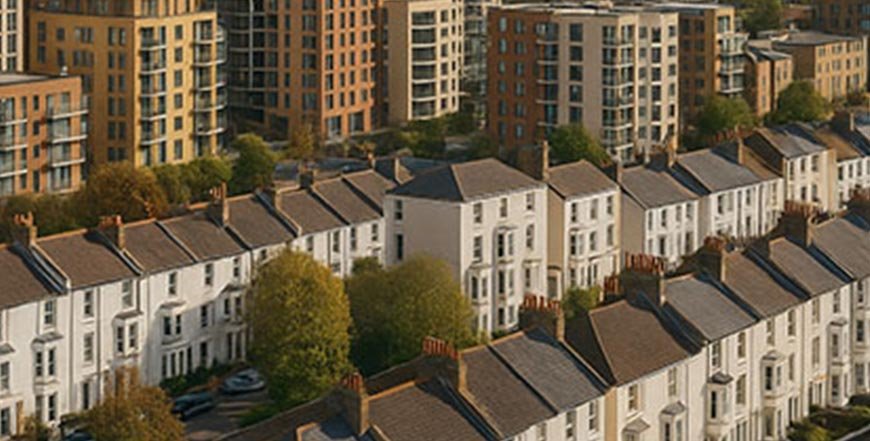
Brighton & Hove Faces Huge Housing Challenge
Independent analysis from socio-economic specialists at Marrons indicates Brighton & Hove will need to deliver more than 37,400 new homes by 2040 to keep pace with population growth. That equates to roughly 2,498 homes per year, a sharp increase on earlier targets and a clear signal of the scale of the city’s housing challenge.
The rise in projected housing need is driven by a new national methodology for calculating housing targets, introduced by the government in late 2024. This revised standard has pushed Brighton & Hove’s minimum requirement higher than previously anticipated. The updated approach is reinforced by forecasts from the Office for National Statistics (ONS), using both the 2021 Census and earlier regional projections. Demographic change is also playing a role. The South East’s population is expected to grow by around 7% in the coming years, reaching close to 8.2 million. Within Brighton & Hove itself, the number of first-time buyers is predicted to increase by 17%, intensifying demand for housing that is affordable and accessible.
“Despite steady progress in recent years, housing delivery remains well below the level needed. Between 2011 and 2021, the city added just over 500 homes per year on average. More recently, the pace has picked up, with around 860 homes delivered in 2023 and just over 1,000 in 2024. However, even at this improved rate, the city still falls far short of the 2,498 homes per year target. Without accelerated delivery, the gap between supply and demand will continue to widen..”
Brighton & Hove’s geography adds a further layer of complexity. The city’s administrative boundaries are tightly drawn, leaving little room for large new housing sites. This constraint means that regional collaboration will be crucial, with surrounding authorities likely to play a role in accommodating additional growth. The city is already exploring broader partnerships across Brighton and Sussex as part of wider devolution discussions.
What It Means for Brighton & Hove
The challenge is not simply about numbers. Brighton & Hove must also ensure a variety of housing types are provided, from market-rate developments to affordable and social housing, as well as homes designed for first-time buyers and downsizers. Brownfield regeneration, rooftop extensions, and the intensification of existing sites are expected to be part of the solution, helping to unlock new capacity while preserving valued landscapes.
If building targets are not met, the city risks worsening affordability, increased pressure on the rental market, and longer waiting lists for social housing. Infrastructure such as schools, transport, and health facilities would also face greater strain. Yet this challenge also represents an opportunity. With the right policies, investment, and partnerships, Brighton & Hove could reshape its housing landscape in a way that is both sustainable and inclusive. Balancing growth with design quality and community needs will be critical in ensuring that new developments enhance the city while meeting demand.d Telford hospitals to provide high-quality, efficient, and patient-centred care for years to come.





